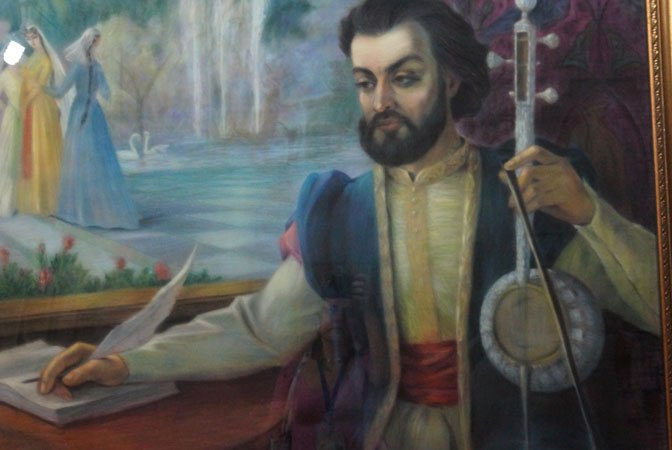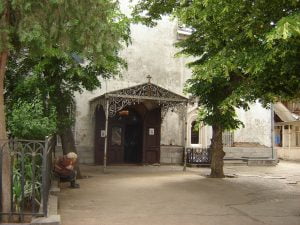Sayat Nova: The Life of an Armenian Poet and Musician
Sayat Nova, born Harutyun Sayatyan, remains a celebrated figure in Armenian and Caucasian cultural history. He is recognized as a poet, musician, and ashugh (troubadour), whose work transcends borders, languages, and cultures. His life and art reflect the rich tapestry of the 18th-century Caucasus, where Armenian, Georgian, and Persian influences intertwined. This article explores the life, works, and lasting legacy of Sayat Nova, a master of lyrical expression whose influence continues to resonate today.
Early Life and Background of Sayat Nova
Sayat Nova was born in 1712 in Tbilisi, Georgia, to an Armenian family. The city’s cultural diversity significantly influenced his artistic development, with Armenian, Georgian, and Persian traditions blending seamlessly. Despite his Armenian roots, Sayat Nova composed songs in multiple languages, including Armenian, Georgian, and Persian, reflecting the multicultural environment around him.

From an early age, Sayat Nova displayed exceptional talent in music and poetry. He received education in an Armenian monastery, where he learned to play several musical instruments, including the kamancheh and the saz—traditional instruments of the Caucasus and the Middle East. His exposure to both religious and secular music laid the foundation for his future career as an ashugh.
Sayat Nova and the Rise of the Ashugh Tradition
Sayat Nova epitomized the ashugh tradition, a vital cultural element in the Caucasus. Ashughs, itinerant poet-musicians, composed and performed songs about love, heroism, and social issues. Mastering this tradition, Sayat Nova became a beloved figure in the region’s courts and marketplaces.
His work as an ashugh extended beyond entertainment; it also served as a platform for social commentary. Sayat Nova’s songs explored themes of love, loss, and the human condition, while subtly critiquing the social and political structures of his time. His ability to weave complex emotional and intellectual themes into his music earned him widespread admiration.
Sayat Nova at the Georgian Court
The royal courts of the Caucasus quickly recognized Sayat Nova’s talents. He served as a court musician for King Erekle II of Georgia, a role that elevated his status and expanded his audience. At the court, Sayat Nova composed some of his most famous works, blending Armenian, Georgian, and Persian influences into a unique style that resonated with the Georgian aristocracy.
However, his time at the court brought challenges. Sayat Nova’s relationship with the Georgian royal family was complex, marked by both admiration and tension. According to legend, his deep affection for Erekle II’s sister, Princess Ana, led to his eventual dismissal from the court. While the accuracy of this story is debated, it reflects the romantic and tragic elements that characterize Sayat Nova’s life and art.
The Musical and Poetic Legacy of Sayat Nova
Sayat Nova’s body of work is vast, with hundreds of songs and poems attributed to him. His lyrics stand out for their emotional depth, lyrical beauty, and philosophical insights. Sayat Nova wrote in Armenian, Georgian, and Persian, making his work accessible to a broad audience across the Caucasus and beyond.
One hallmark of Sayat Nova’s music is his ability to convey complex human emotions through the ashugh tradition. His songs often explore themes of love, longing, and spiritual reflection. For example, in his famous song “Kani Vur Jan Im,” Sayat Nova expresses a deep yearning for a beloved, blending poetic imagery with musical expression to create a powerful emotional experience.
Sayat Nova’s influence extends beyond his lifetime. Subsequent generations of musicians, poets, and scholars have celebrated his work. In Armenia, the Sayat Nova State Musical School in Yerevan honors his legacy by training young musicians in the ashugh tradition. Modern Armenian poets and musicians continue to draw inspiration from his lyrical and musical innovations.
Sayat Nova’s Influence on Armenian and Caucasian Culture
Sayat Nova’s contributions to Armenian culture are immeasurable. His work solidified the Armenian language and its poetic traditions, making them more accessible to the broader public. Sayat Nova’s ability to compose in multiple languages also helped bridge cultural divides in a region often marked by conflict. His songs, which frequently addressed universal themes of love and loss, fostered a sense of shared cultural identity among the diverse peoples of the Caucasus.
His influence extended to Persian and Georgian literary traditions as well. His Persian compositions, in particular, are noted for their sophistication and lyrical beauty. Similarly, his Georgian songs are celebrated for their emotional depth and technical mastery. Sayat Nova transcended the ethnic and linguistic boundaries of his time, becoming a true cultural icon of the Caucasus.
Sayat Nova in Modern Culture and Media
In modern times, Sayat Nova’s legacy continues to be celebrated across the Caucasus and beyond. His life and works have been the subject of numerous books, films, and scholarly studies. Perhaps the most famous modern tribute to Sayat Nova is Sergei Parajanov’s 1968 film “The Color of Pomegranates,” widely regarded as a masterpiece of Soviet cinema. The film, a highly stylized and symbolic portrayal of Sayat Nova’s life, has been praised for its innovative approach to storytelling and its profound exploration of the poet’s inner world.
In addition to his influence on cinema, Sayat Nova’s songs continue to be performed and recorded by contemporary musicians. His music, which remains as relevant today as it was in the 18th century, serves as a testament to the enduring power of his artistic vision.
The Tragic End of Sayat Nova
n 1795, Sayat Nova met a tragic end when the invading army of Agha Mohammad Khan Qajar, the Shah of Iran, attacked the Haghpat Monastery. The Shah demanded that Sayat Nova renounce Christianity and convert to Islam. Refusing to abandon his faith, Sayat Nova declared his unwavering commitment to the Armenian Christian religion. In response, he was executed by beheading
Sayat Nova is buried at the Haghpat Monastery, a UNESCO World Heritage site, where his grave continues to be a place of pilgrimage for those who honor his contributions to Armenian culture and the arts.

The Enduring Legacy of Sayat Nova
Sayat Nova: The Armenian Poet and Musician stands as a towering figure in the cultural history of the Caucasus. His work as a poet, musician, and ashugh has left an indelible mark on Armenian, Georgian, and Persian literature and music. Sayat Nova’s ability to blend different cultural influences into a cohesive artistic vision made him a true representative of the multicultural society in which he lived. Today, his legacy continues to inspire artists and scholars, ensuring that his voice will be heard for generations to come.
